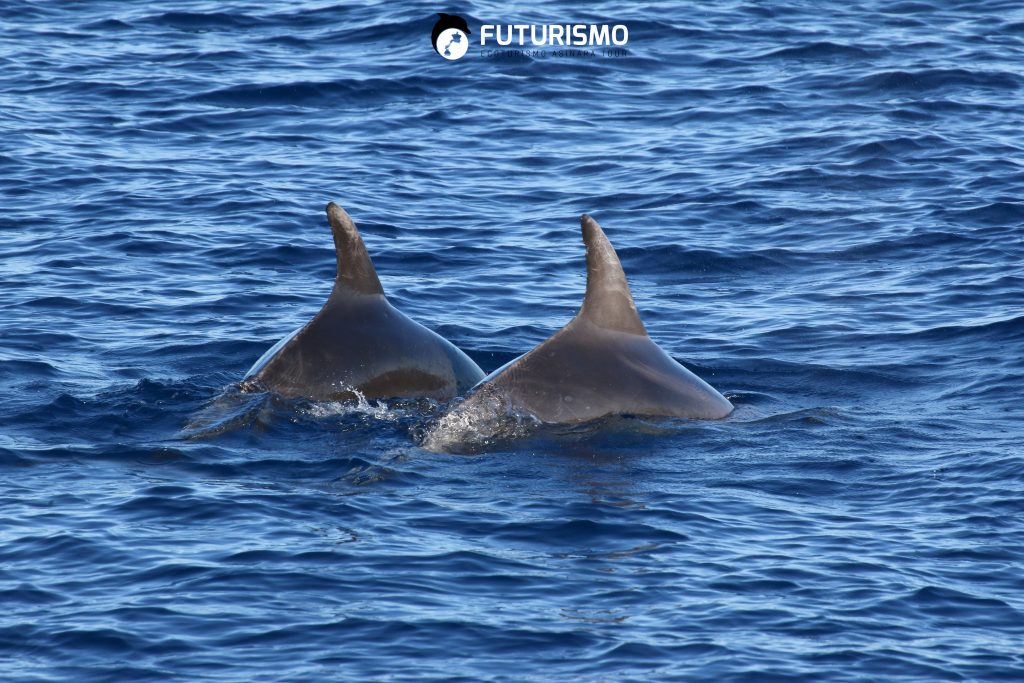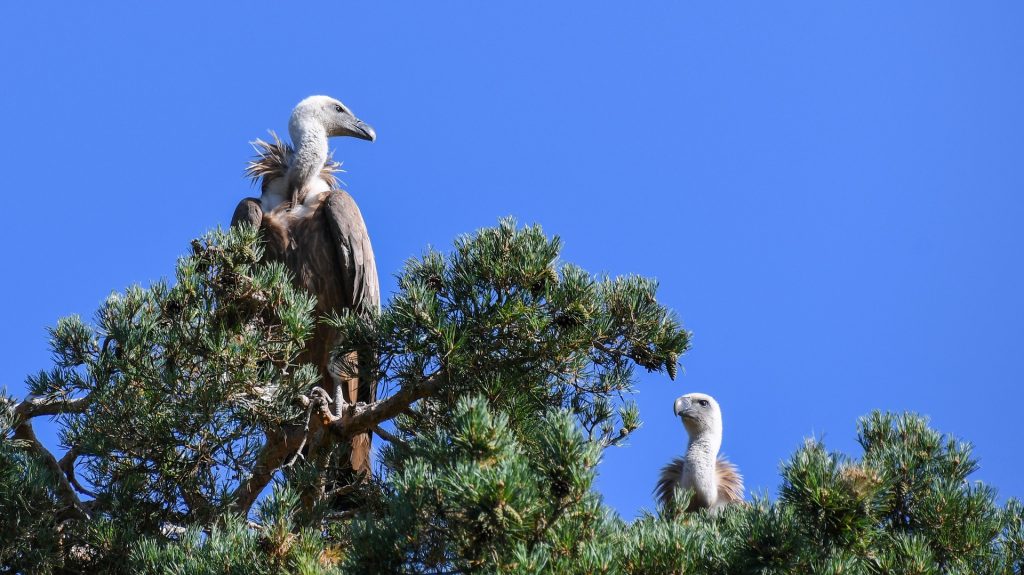Sardinia has a varied landscape of beautiful sandy beaches, coastal lagoons and dominating rugged mountains all within a stone’s throw of one another.
All of the different landscapes and habitats means there is lots of wildlife you can see during a holiday to Sardinia.
Nina, who runs the blog Nina Travels, explains how the island is so diverse. She says, “Sardinia might be the perfect summer holiday destination, but if you’ll be coming to this Italian island in the spring, you will be amazed how green and blossoming Sardinia really gets.
“I would definitely recommend you to pack hiking boots and explore the inner part of the island by foot. You will be surrounded by unspoiled nature, amazing views and different wildlife. Even though you might not be into hiking, you can still enjoy remote bays, beaches and lagoons, where elegant pink flamingos can be caught on camera.”
But what wildlife are you likely to see and where on the island? Here we take you through the wildlife you might be able to see during your travels.
Pink flamingos
Where: San Teodoro

The San Teodoro lagoon is home to the famous pink flamingos of Sardinia, which is regarded as one of the greatest natural treasures of the island because of its significance to wildlife.
Heading to San Teodoro and seeing these migratory birds is highly recommended. Jenna & Steven, who have visited Sardinia before and run the popular travel blog Well Travelled Man, went to see the flamingos and managed to see a whole flock of them.
“When we visited Sardinia we did not expect to see Pink Flamingos! We were lucky enough to see hundreds of them just 20 minutes from Cagliari.
“We found these guys by chance on our way to Tuerredda Beach and Spiaggia di Cala Cipolla and we stopped in on our way back to the hotel in Cagliari and spent around 20 or 30 minutes just watching them. They are fascinating creatures and absolutely beautiful and elegant.”
Bottlenose dolphin
Where: North-eastern Sardinia and the Strait of Bonifacio

Bottlenose dolphins are seen by many as the stars of the sea with their charisma and intelligence charming people from all over the world.
Their curved mouths give the appearance of boasting a permanent smile and dolphins can often be seen breaching the water as they play.
One of the best ways to see these incredible mammals is to go on a tour with Progetto Natura from Banchina Rafael Catardi or Futurismo Asinara from Marina dell’Ancora as they offer the best tours to see these playful dolphins during the summer months.
Octopus
Where: Palau Sardinia

The common octopus can be found living in Sardinia’s coastal waters and with its bulbous head, large eyes and eight tentacles it is one of the most distinctive marine animals.
With Nautilus Diving Center you can explore 40 dive sites around Palau Sardinia and if you’re lucky you could see the magnificent octopus during one of their dives.
Octopuses can grow to just over four feet in length and their prey includes crabs, crayfish and molluscs.
Flora
Where: Supramonte
Supramonte in Sardinia is a vast territory that is away from the hustle and bustle of the islands towns and roads.
In this area there are vast stretches of highlands, mountains and forests of oaks and junipers as well as limestone rocks and dolomites.
Wild Sardinia, who organise trekking excursions to the area, will help inform you of the geology and flora of the area.
They say, “The Supramonte flora is dominated by the percentage of lichen and juniper (think of the Sas Baddes forest “Orgosolo”, which is the largest but also the last of the primary forests present in the Mediterranean basin, partly formed by large multi-century patriarchs).
“Alongside some large specimens of gigantic juniper plants, located in the upper part of the fluminedu rio, in the cliffs and in environments with a particular microclimate, you can admire gigantic specimens of terebinth, lentiscus, olivaste, corbezzolo and the suggestive and colourful maple plant.”
At the foot of the mountains you can see large heaths of fragrant Peony masculas, known as “rose and mountain”
Barracudas, lobsters and other marine life
Where: Palau Sardinia

Palau Sardinia is abundant with wildlife and a spokesperson from Nautilus Diving Center, says, “The Archipelago and Bonifacio Strait is a wide shallow bottom area, the waters between the islands are no deeper than 70 meters. Such an extension of shallow and well-lit bottoms, swept by currents, represent a perfect cradle for rich and diversified marine life.
“You will dive along enormous granite rocks, drop offs, overhangs, swim throughs, caves all covered by spectacular marine life, sea fans, sponges, tube worms. Those incredible landscapes offer habitats to a large variety of fishes, molluscs and crustaceans like moray eel, stone fish, breams, conger, barracudas, groupers, crabs, lobster and lots of nudibranchs.”
During your dive with Nautilus Diving Center you will leave at 8am and can enjoy snacks and drinks as well as two dives.
Griffon vultures
Where: Central-eastern and north-western Sardinia

The Griffon vulture is a rare type of vulture eagle and can boast a 3 metre wingspan, making it Europe’s second largest bird. The bird has a distinguishable creamy-white ruff, matching the colour of its head and neck.
The average life span of a vulture is just over 40 years and it can weigh up to 11kg. You are most likely to see it circling way above you as it searches for food.
These spectacular birds in the 1940s had an estimated population of 800-1,200 across Sardinia, but this population drastically dropped by over 80%.
Now there is a scheme called Life Under Griffon Wings that is aiming to increase the population of these birds across the island.
Sardinian red deer
Where: Whole island
The Sardinian deer, also known as the Corsican deer, is a subspecies of the red deer and can be found across most of the island.
The antlers of the deer are slightly smaller than that of a typical red deer and they typically can grow up to 80cm in length.
From August to November it is mating season and you could potentially see the male deer battle it out to win over the mature females. Typically there are a dozen female deer per male.
Falcons and other birds
Where: Whole island

Sardinia is somewhat of a bird watcher’s paradise as there are lots of birds you can see during your holiday to the island.
Hawks, falcons, sparrows, ravens and kestrels are just some of the birds you can see during your holiday.
Wild Sardinia, says, “Just where the Supramonte coast rushes with dizzying crags in the sea of the great Gulf of Orosei and Ogliastra, nesting many species of birds and falcons, in particular the Queen’s Hawk, known as the hawk eleonorae that owes its name to Eleonora, reigning Sardinian judge of Arborea, who in the sixteenth century, with laws, forbade the hunting of adult species of falcons and other species of birds.”
Giara horses
Where: Giara plateau

The Giara horses are native to Sardinia and due to the fact it lives on a stony basaltic plateau, the horse is small and hardy.
The horses are either brown or black and despite being native to the island their origins are uncertain with some historians believing they came to the island with the Greeks. As a result it is not certain how long the horses have lived in this area of the island.
They are some of the last wild horses in Europe and today they continue to be a huge attraction for many visitors, who can see them on an excursion with Futurismo Asinara.
Image Credit: Futurismo Asinara.







2 thoughts on “Sardinia: A wildlife lover’s paradise”
Comments are closed.